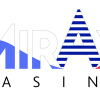Initially, the snack bar (built by Mission Valley’s R.E. The stainless steel-filled snack bar was dubbed The Sky Bar, and for years the Big Sky advertised “Always two cartoons!” A “Kiddieland” playground on the property included swings, slides, and whirls. A more upbeat group experience occurred when Herbie: Fully Loaded was released in 2005. Bug owners swarmed the Santee lot in droves, beginning midafternoons and eventually covering nearly every square inch of drive-in pavement for two consecutive sold-out weekends. With two 1.85:1-ratio screens facing each other and room for 700 cars, it’s open seven nights a week and at this writing charges $6 per person. At this writing, California has 21 drive-ins operating with a total of 50 screens. Like most drive-ins of that era, the Rancho had a playground on the property, in this case right in front of the screen tower itself. Since there was no footer “stage” constructed in front of the screen, Drive-in Dick stood up on a car to address the rally.
THE MISSION Drive-In at 30002 Del Obispo Street in San Juan Capistrano was owned by William Foreman’s Pacific Theatres and featured a mural of Mission San Juan Capistrano on the back of its screen, visible from the highway. San Giacomo, a reporter for the Cleveland Plain Dealer and a drive-in worker in his youth, has designed the stories to stand on their own. In August 1986, Valley Drive-in manager Jerry R. Beauchamp went so far as to file for a seat on the Oceanside City Council. In 1986, four large banks of high-intensity floodlights were installed at nearby Santana High School’s football stadium, to illuminate the playing field at night. On this visit, it was still daylight, and the speakers near the screen and alongside the snack bar broadcast a local oldies station. In the mid-‘70s, the Pacific’s snack bar sold a unique concoction still fondly remembered by locals — an entire pizza (one dollar) with mozzarella, cheddar cheese, and jalapeño toppings. At that time, it was one of around 60 Midway Drive-Ins operating in the U.S. On May 1, 1961, Ashkins granted an option to purchase her Tu-Vu stock to Sero Amusements, a competitor running several local drive-ins. On September 30, 1958, all the drive-in’s assets were transferred to the Tu-Vu Drive-In Corporation (incorporated September 22, 1958), owned by William D. Russo (listed as company president), along with a woman named Della M. Ashkins and a third party.
Unfortunately for Ashkins, the sale to Sero never did go through, as Sero chose not to exercise its purchase option and it expired April 30, 1963. The judgment in Ashkins’ favor was later reversed, and the trial court was directed to enter judgment declaring that the bylaw in question was valid and enforceable against defendant Ashkins. Though the Bernards still owned the Midway, Sero took over management and expanded the lot to fit around 700 cars. The original Campus Drive-In Corporation dissolved July 8, 1975, though Eldorado – the latterday incarnation of the Russo family enterprise – still operated the theater. 1937 to open California’s first drive-in, the Pico (at the time, the fourth drive-in in the nation). THE DEL MAR Drive-In on Via de la Valle, across the street from the Del Mar Fairgrounds, opened in 1953 with space for 700 cars. June 3, 1948: Former Navy pilot Edward Brown Jr. opens a Fly-In Drive-In Theatre, with room for 500 cars and 25 airplanes. CHECKITOUT —- NEW DRIVE-IN COMICBOOK!
Highly inspired by gaming institutions in Germany and Belgium, he created the S.B.M. It is important to understand that the gaming industry in Monaco was created to improve the state regain financial stability by bringing money from richer countries; therefore, allowing its own citizens to gamble would have gone against all common sense as it would have been counter productive. This restriction was created under the reign of Charles III who was the Prince of Monaco from 1856 until his demise in 1889. It was supposed to protect Monaco citizens from further indebtedness. Monaco citizens are not allowed to gamble at the Monte Carlo Casino; in fact, while many of them actually work there, they are not even allowed to visit the casino. In fact, the Principality of Monaco was not always as economically prosperous as it is today. On the other hand, all foreign nationals including those who reside in the Principality of Monaco can legally gamble there.





